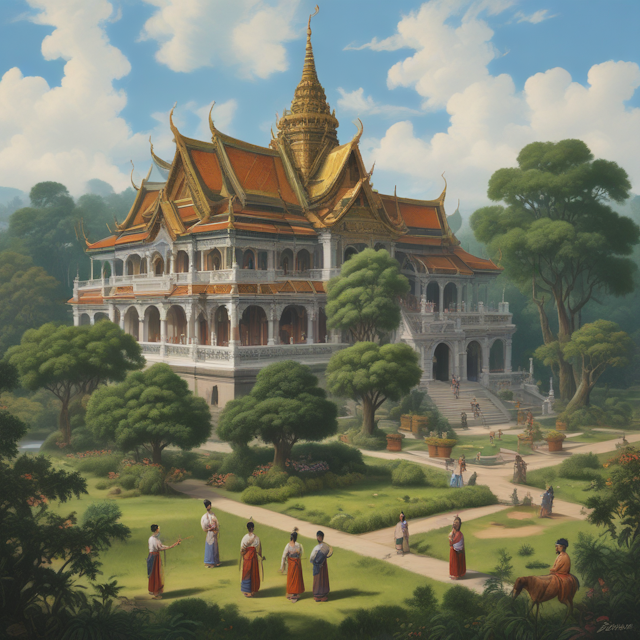
| Name | Kingdom of Siam (now Kingdom of Thailand) |
| Type | Constitutional monarchy |
| Capital | |
| History | Maintained independence, gradually modernized economy and institutions starting in 18th century, without falling under full European colonial rule |
| Location | Southeast Asia |
| Current Status | Stable, prosperous constitutional monarchy, key player in Southeast Asian affairs |
| Transformations | Became regional economic and political powerhouse, important trading hub and global player |
The Kingdom of Siam, now known as the Kingdom of Thailand, is a Southeast Asian nation with a long and storied history. Unlike many of its neighbors, Siam was able to maintain its independence and gradually modernize its economy and institutions starting in the 18th century, without falling under full European colonial rule. Through a combination of pragmatic reform, strategic diplomacy, and a degree of cultural preservation, Siam transformed itself into a regional economic and political powerhouse, becoming an important trading hub and global player.
The origins of the Kingdom of Siam can be traced back to the 13th century and the founding of the Sukhothai Kingdom, one of the earliest Thai kingdoms. Over the centuries, the Thai kingdoms of Sukhothai, Ayutthaya, and Thonburi rose and fell, with the latter eventually uniting most of modern-day Thailand under the House of Chakri in 1782.
Under King Rama I, the new Kingdom of Siam embarked on a program of gradual modernization, adopting certain Western technologies and administrative practices while preserving core elements of Thai culture and the monarchy. This "Siamese Renaissance" laid the groundwork for the kingdom's future rise.
Throughout the 19th century, Siam continued to selectively adopt Western innovations, from the steam engine and telegraph to modern military organization and centralized governance. Rather than succumbing to outright colonial rule like neighboring states, Siam skillfully maneuvered between the competing European powers, maintaining its independence through a combination of concessions, treaties, and shrewd diplomacy.
Under the long reign of King Rama V, Siam saw a major expansion of its territory, annexing the kingdoms of Lan Na, Lan Xang, and parts of the Malay Peninsula. This transformed Siam into a major regional power, with a booming economy fueled by export of resources like tin, rice, and teak wood.
Despite its embrace of Western technology and institutions, the Kingdom of Siam made a concerted effort to preserve its distinct Thai culture and traditions. The monarchy remained a powerful and revered institution, while the Thai language, Buddhism, and customs continued to predominate. Siam's capital of Bangkok became renowned for its ornate temples, palaces, and traditional architecture alongside modern infrastructure.
This balance of modernization and cultural preservation helped Siam avoid the political and social upheaval experienced by many European colonies in the 19th and 20th centuries. The kingdom transitioned relatively smoothly from an absolute monarchy to a constitutional monarchy in the early 20th century, maintaining stability and prosperity.
As the 20th century progressed, the Kingdom of Siam (which officially changed its name to Thailand in 1939) became an increasingly important economic and political force on the global stage. Its strategic location, natural resources, and skilled workforce made it an attractive destination for foreign investment and trade. Major industries such as automotive manufacturing, electronics, and tourism flourished.
Thailand also played a pivotal role in regional affairs, using its economic might and diplomatic savvy to navigate the tensions of the Cold War period. It remains a key player in the Association of Southeast Asian Nations (ASEAN) and other multinational organizations. The Thai monarchy, while no longer absolute, continues to wield significant soft power and cultural influence both domestically and internationally.
Today, the Kingdom of Thailand stands as a stable, prosperous constitutional monarchy and a leading economy in Southeast Asia. Its successful modernization while preserving national identity serves as a model for other developing nations seeking to balance progress and tradition.